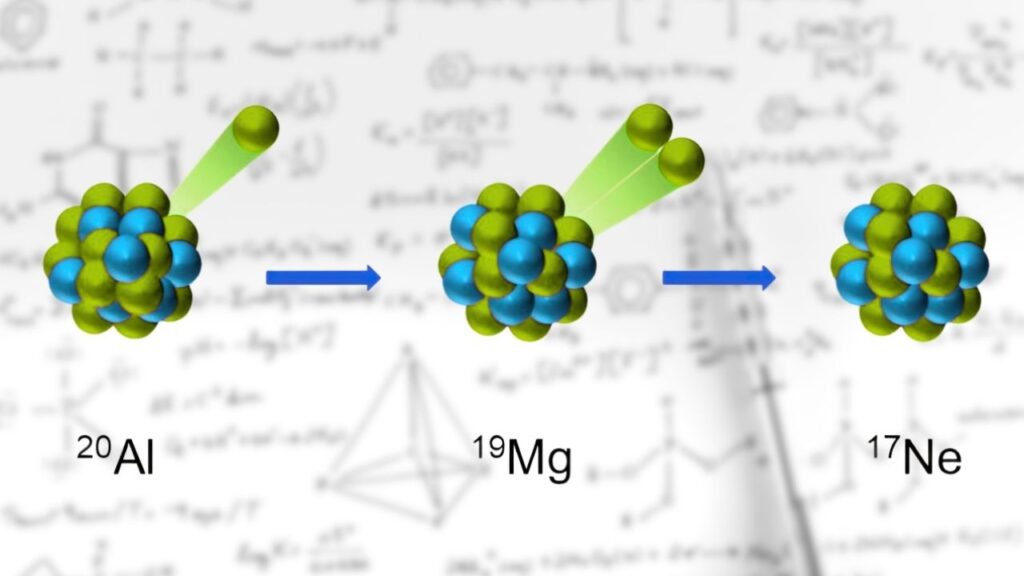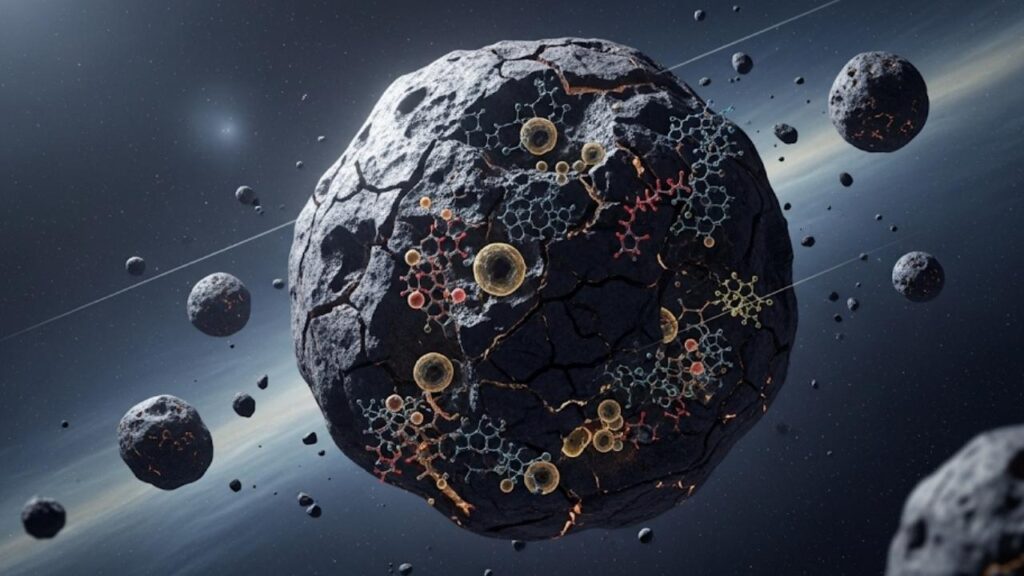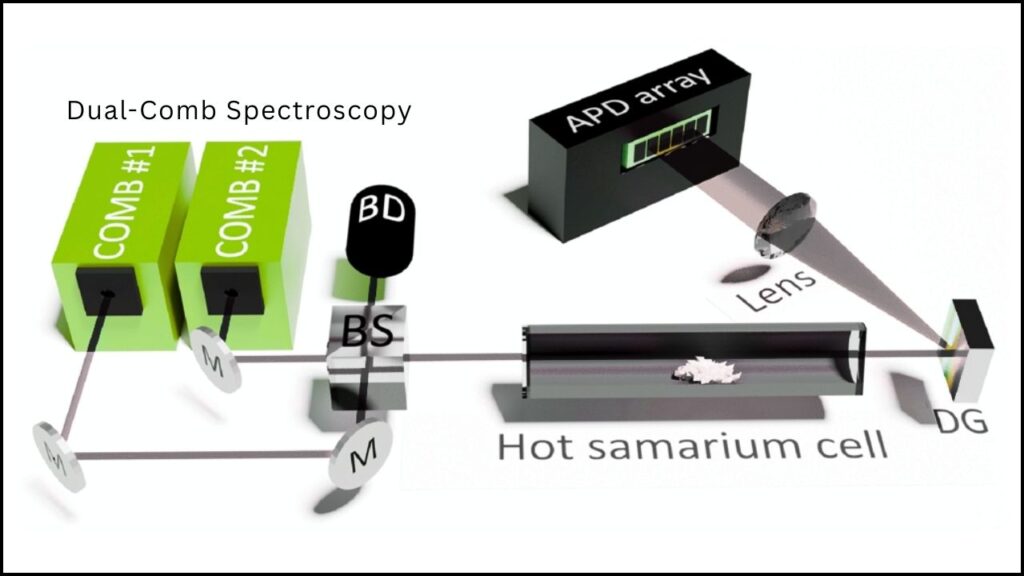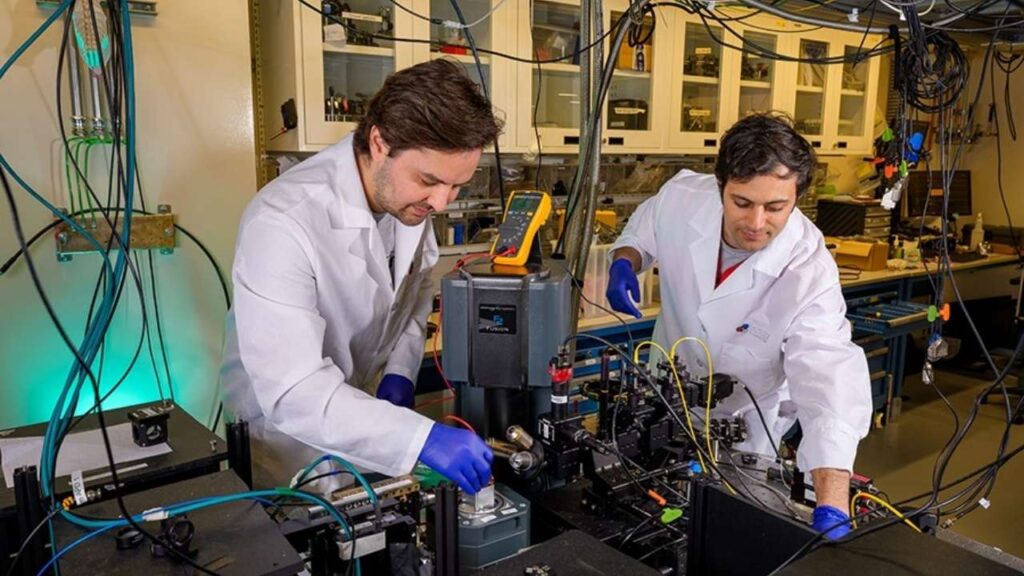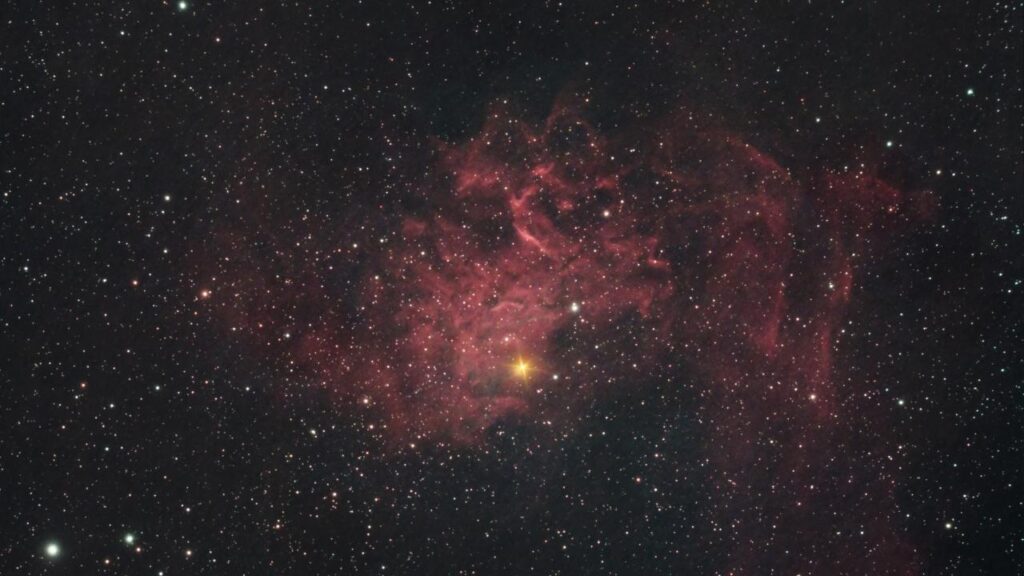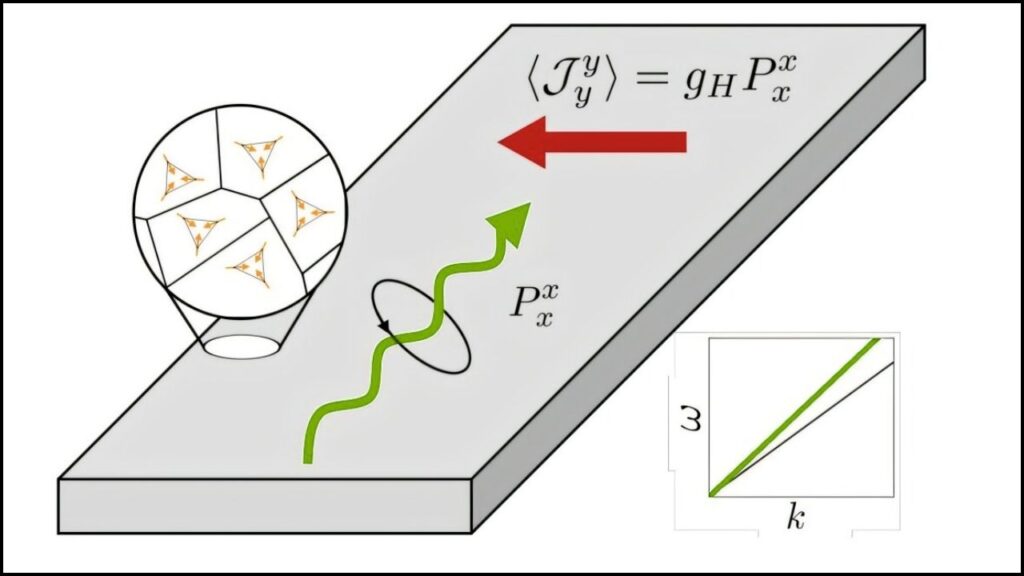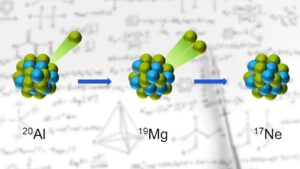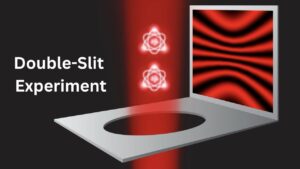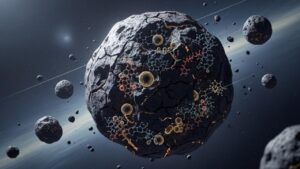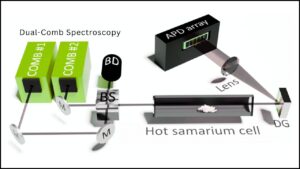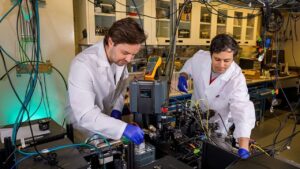Astronomers have uncovered a fascinating and rare cosmic event involving a newborn star named WSB 52, located about 441 light-years away in the constellation Ophiuchus. This young star generated a powerful explosion by firing a high-speed jet into nearby cold gas, causing an expanding bubble that subsequently collided with and distorted the star’s own protoplanetary disk—the disk of gas and dust that is the birthplace of planets. This discovery challenges traditional ideas about the calm environments in which planets form, revealing instead a far more dynamic and violent process.
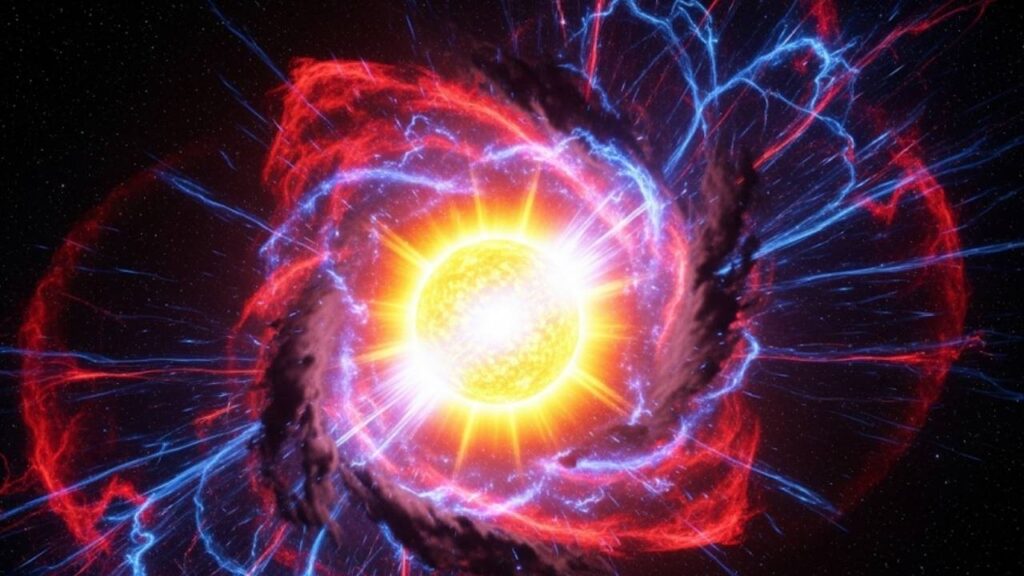
Table of Contents
What Makes WSB 52 So Unique?
WSB 52 is surrounded by a protoplanetary disk, a rotating disk made of gas and dust from which planets eventually form over millions of years. Normally, the star’s jets, which are fast streams of particles ejected along the star’s axis, clear surrounding material, enabling the disk to evolve steadily. However, around WSB 52, researchers observed an explosively expanding bubble approximately 750 astronomical units (AU) in radius—about 19 times the distance between the Sun and Pluto. This bubble is expanding at a speed of 12.5 kilometers per second, creating shocks and distortions in the star’s own planetary nursery.
Unlike typical jets that help clear the way for planet formation, the bubble generated here is pushing back against the protoplanetary disk, deforming it and blowing away fragments of gas. This “blastback” phenomenon is unprecedented and was not predicted by existing theories, suggesting that young stars might face far more turbulent conditions than previously assumed.
Newborn Star Triggers Explosion
| Feature | Details |
|---|---|
| Star Name | WSB 52 |
| Distance from Earth | Approx. 441 light-years |
| Location | Constellation Ophiuchus |
| Protoplanetary Disk | Rotating disk of gas and dust around young star |
| Expanding Bubble Radius | ~750 astronomical units (19× distance Sun to Pluto) |
| Bubble Expansion Speed | 12.5 km/s |
| Bubble Energy | Comparable to Sun’s total energy output in a year |
| Effect on Disk | Distortion and gas ejection caused by collision with expanding bubble |
| Observation Instrument | Atacama Large Millimeter/submillimeter Array (ALMA) |
The extraordinary discovery of the newborn star WSB 52 trapped within the cosmic blast it ignited has revolutionized our understanding of star and planet formation. The intense bubble explosion, driven by a high-speed jet colliding with cold gas, is actively warping the star’s protoplanetary disk and creating a far more turbulent environment for planet birth than traditional models predicted.
Thanks to advanced instruments like ALMA, astronomers are now witnessing firsthand the violent dynamics that sculpt young solar systems, paving the way for deeper insights into how stars, planets, and possibly life itself originate in the cosmos.
Understanding the Cosmic Players: Protoplanetary Disks and Stellar Jets
To fully grasp the significance of this discovery, it’s helpful to understand two key elements:
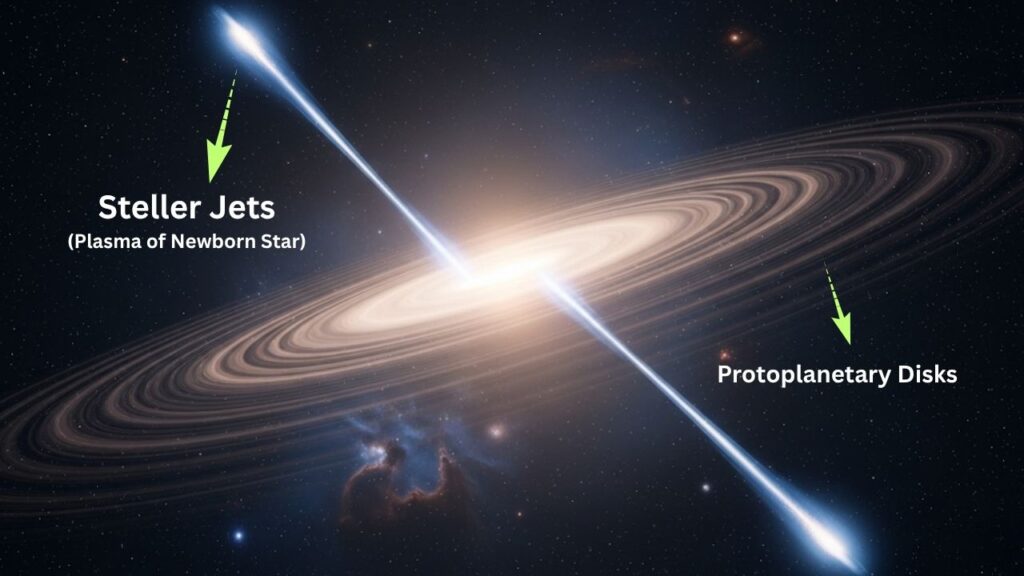
What Is a Protoplanetary Disk?
A protoplanetary disk is a vast, rotating ring of gas and dust surrounding a newborn star. Imagine a cosmic pancake surrounding the star where particles slowly stick together over millions of years, eventually forming planets, moons, asteroids, and other bodies. These disks form from leftover material of the molecular clouds that collapse under gravity to birth stars.
What Are Stellar Jets?
As young stars grow by attracting gas and dust, they also eject some material at very high speeds in narrow beams called stellar jets, streaming out along the star’s rotational poles. These jets serve to help the star shed excess angular momentum and material, thereby regulating its growth.
In the case of WSB 52, one such jet collided with nearby cold gas hundreds of years ago, compressing it so intensely that the gas exploded outward, creating an enormous expanding bubble that now impacts the star’s own disk.
How the Explosion Happened: A Step-by-Step Breakdown
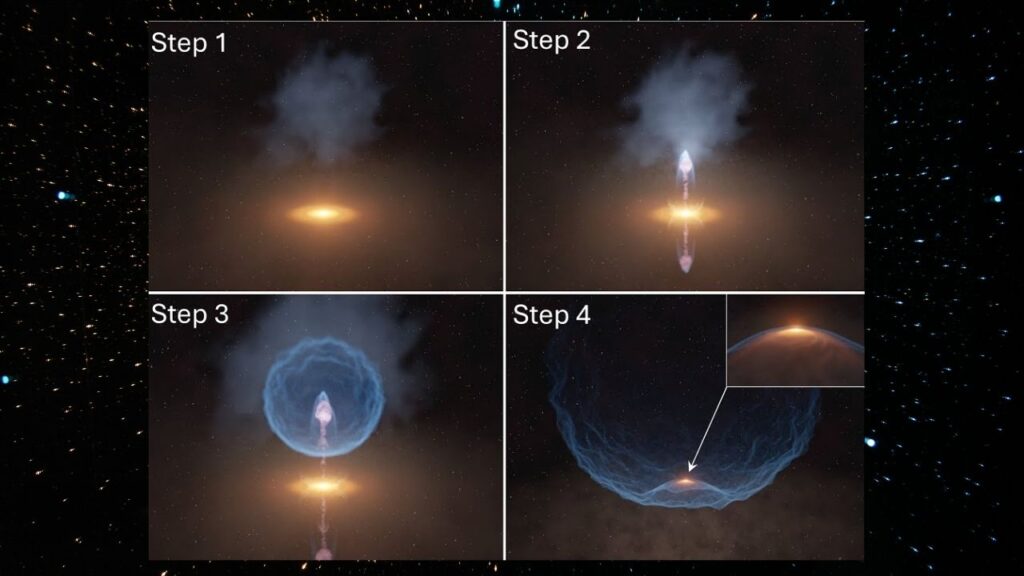
- Star and Disk Formation: Gravity causes a molecular cloud to collapse, forming the star WSB 52 with a surrounding protoplanetary disk.
- Jet Ejection: The young star emits a powerful, high-speed jet of gas along its axis.
- Jet Hits Cold Gas: The jet collides with cold gas nearby, sharply compressing the gas.
- Explosion and Bubble Formation: The compressed gas explosively expands, forming a bubble about 750 AU in radius.
- Bubble Expansion: The bubble expands outward at 12.5 km/s, creating a shockwave.
- Bubble-Disk Interaction: The shockwave pushes back against the star’s own protoplanetary disk, distorting its shape and blowing away fragments that could form planets.
Why This Discovery Changes Our Understanding of Star and Planet Formation
Challenging the Traditional Calm Model
Earlier models imagined planet formation as a relatively tranquil, linear process, where dust grains gently coalesce within a stable protoplanetary disk. However, this discovery highlights that young star systems can undergo violent, explosive events that reshape the disk environment dramatically. The impact on planet formation could be profound:
- Disk Distortion: Explosive bubbles can warp and deform the disk’s structure, potentially creating uneven conditions for planet formation.
- Material Loss: Gas fragments essential for planet building could be blown away, influencing the number and size of future planets.
- Chaotic Formation Conditions: Harsh environments could lead to planets with diverse compositions and unusual orbits.
Implications for Exoplanet Research
Since the architecture of planetary systems depends on their birth environments, such explosive feedback mechanisms add complexity to the models astronomers use to predict exoplanet characteristics and habitability. A star’s early life may have a more chaotic influence on the diversity and formation of planets than previously thought, possibly even affecting the likelihood of planets hosting life.
Advances in Astronomy Technology
This discovery was made possible using the Atacama Large Millimeter/submillimeter Array (ALMA), a powerful telescope array in Chile. ALMA’s ability to observe at radio wavelengths with high spectroscopic detail allowed astronomers to detect gas motions and structures invisible in optical or infrared light, akin to performing a detailed “CT scan” of the star’s surroundings.
Future research will likely combine multi-wavelength observations and chemical analyses to deepen our understanding of these explosive phenomena and their influence on star and planet formation.
Did Life Come From Outer Space? Scientists Say the Clues Are Adding Up
China’s Space Program Heats Up With 16 Launches and Mars Sample Return Plans
FAQs About Newborn Star Triggers Explosion
Q1: How rare are these explosive bubbles around young stars?
While expanding bubbles have been seen before, WSB 52’s bubble is the first directly observed to collide with and deform a protoplanetary disk. More data is needed to determine how common this phenomenon is in the galaxy.
Q2: How big is the bubble compared to our solar system?
The bubble is about 750 AU in radius—roughly 19 times farther out than Pluto’s orbit—making it massive in scale and energetic enough to impact the entire disk.
Q3: Could the explosion destroy existing planets?
No fully formed planets are known in this system yet, but such shocks could disrupt or prevent planet formation, influencing the eventual size and number of planets.
Q4: How do astronomers observe jets and bubbles invisible in visible light?
Telescopes like ALMA use radio wavelengths to study molecular gas motions and chemical signatures, revealing structures that cannot be seen with optical telescopes.
Q5: What’s next for research on this topic?
Scientists plan to investigate how frequent these explosive events are and their broader impact on different planetary systems, aiming to understand how common such violent feedback is in shaping forming stars and planets.
